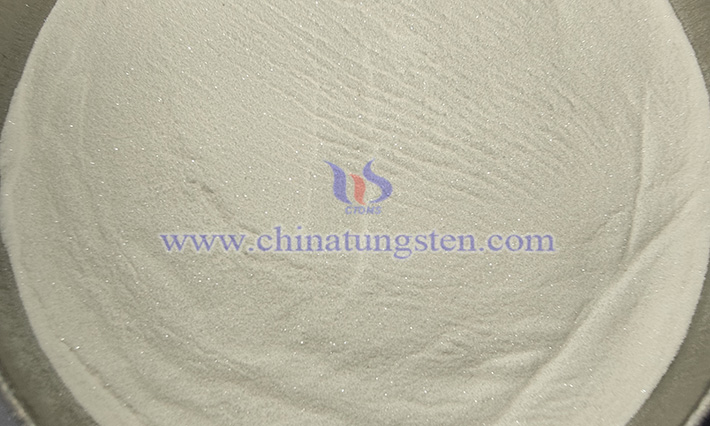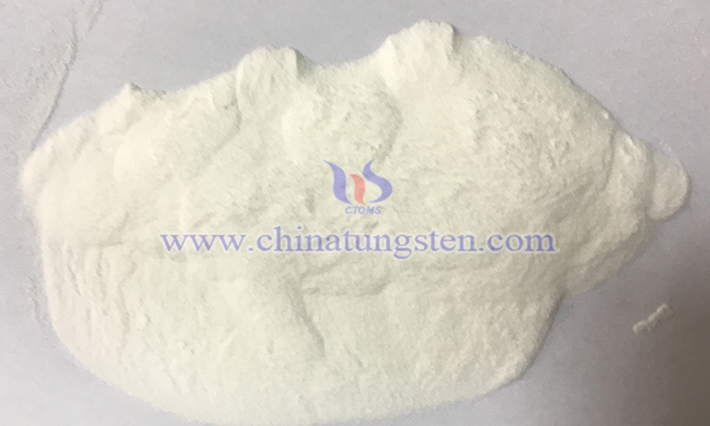How Many Stages Are Involved in the Thermal Decomposition Process of Ammonium Metatungstate?
- Details
- Category: Tungsten Information
- Published on Tuesday, 13 May 2025 17:13
The thermal decomposition process of ammonium metatungstate (AMT) is a complex, multi-stage reaction involving the removal of crystal water, structural phase transitions, and the eventual formation of tungsten oxide. Specifically, the thermal decomposition of AMT can be pided into the following stages:

I. Low-Temperature Crystal Water Removal Stage
AMT crystals contain crystal water molecules, the content of which varies depending on the preparation method. In this stage, AMT gradually releases crystal water, forming an anhydrous AMT intermediate. Thermogravimetric (TG) curves show a noticeable mass loss, while differential thermal analysis (DTA) curves exhibit an endothermic peak corresponding to the evaporation of crystal water. In X-ray diffraction (XRD) patterns, the intensity of crystal diffraction peaks gradually weakens, indicating the beginning of lattice structure breakdown. The product at this stage retains the basic framework of AMT but with significantly reduced thermal stability.
II. Amorphous Phase Formation and Ammonium Ion Removal Stage
As the temperature rises, AMT undergoes a structural phase transition, forming an amorphous intermediate. This stage is accompanied by the release of a large amount of ammonia gas, leading to further mass loss. Raman spectroscopy reveals changes in the vibrational modes of tungsten-oxygen bonds, indicating the reorganization of tungsten-oxygen polyhedra. In XRD patterns, crystalline diffraction peaks completely disappear, replaced by a broadened amorphous halo, confirming the formation of an amorphous phase. This stage is a critical step in thermal decomposition, providing a precursor for the subsequent crystallization of tungsten oxide.

III. Metastable Tungsten Oxide Formation Stage
The amorphous phase further decomposes, forming metastable tungsten oxide. This stage involves the polycondensation of tungsten-oxygen polyhedra, creating low-dimensional tungsten oxide structures. DTA shows an exothermic peak corresponding to the formation of tungsten oxide crystal nuclei. Raman spectra exhibit characteristic peaks at 516 cm⁻¹, 715 cm⁻¹, and 807 cm⁻¹, indicating the formation of WOₓ species. In XRD patterns, weak tungsten oxide diffraction peaks begin to appear, but with low crystallinity, confirming its metastable structure.
IV. Tungsten Trioxide Crystallization Stage
The metastable tungsten oxide species undergo further deoxygenation and structural rearrangement, transforming into stable tungsten trioxide (WO₃). The morphology and particle size of WO₃ are significantly influenced by the rate of thermal decomposition and the surrounding atmosphere.
The thermal decomposition pathway of AMT varies under different atmospheres: in nitrogen, the pathway is similar to that in air, but the final product may retain minor oxygen defects (e.g., WO₂.₉) due to insufficient oxygen pressure; in hydrogen, the decomposition process accelerates significantly, and the product may shift toward lower-valence tungsten oxides (e.g., WO₂).
- Chinatungsten Online: ammonium-metatungstate.com
- CTIA GROUP LTD: en.ctia.group
- Tungsten News & Price: www.ctia.com.cn
- Molybdenum News & Price: news.molybdenum.com.cn
- Tel.: 86 592 5129696; Email: sales@chinatungsten.com



 sales@chinatungsten.com
sales@chinatungsten.com